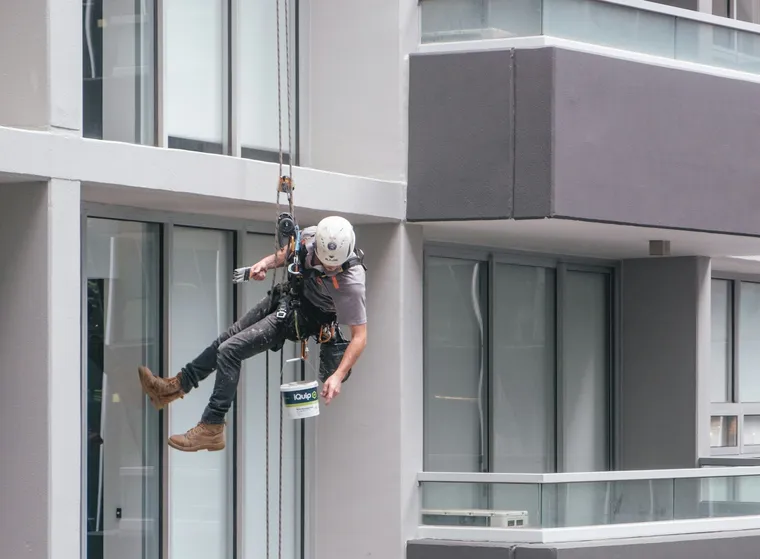There are many factors involved in painting, such as choosing the correct type of paint, preparing the surface, and using the right tools.
Job Responsibilities
Painters must follow specific procedures to ensure that the job is done correctly. First, they must prepare the surface by cleaning, sanding, and priming it. Any holes or cracks must be filled with spackle or another filler. Once the surface is ready, the painter applies primer and then multiple coats of paint, making sure each layer dries properly before applying the next one. If the painter does not allow the paint to dry, it can lead to uneven results.
Tools and Equipment
Painters use various tools to complete their work. Brushes, rollers, sprayers, ladders, and scaffolding are common items found at a painter’s job site. The type of brush or roller used depends on the surface being painted and the type of paint being applied. Oil-based and water-based paints require different brushes. Sprayers are used for larger areas because they can distribute paint quickly. Drop cloths and painter’s tape are used to protect surfaces that should not be painted.
Work Conditions
Painting can be done both indoors and outdoors. Interior painting involves working inside buildings, applying paint to walls, ceilings, and trim. Exterior painting includes painting houses, fences, and other outdoor structures. Weather conditions impact exterior painting because rain, wind, and extreme temperatures can affect how paint dries.
Painters often work on their feet for long periods. They may have to climb ladders, crouch, or stretch to reach difficult areas. Some jobs require painters to wear protective gear such as masks and gloves to avoid inhaling fumes or coming into direct contact with chemicals.
Required Skills
Attention to detail is one of the most important skills for painters. They must be able to apply paint evenly and avoid streaks or drips. Color matching is also important, especially for projects that require blending colors.
Time management is another critical skill. Many painting jobs must be completed within a specific timeframe, so painters must work efficiently. Good communication skills are necessary when working with clients to understand their expectations.
Training and Qualifications
Some painters learn the trade through apprenticeships, while others receive on-the-job training. Apprenticeships provide hands-on experience and usually last several years. There are also vocational schools that offer courses in painting techniques and safety procedures.
Certifications are not always required but can be beneficial. Some organizations offer certification programs that demonstrate a painter’s expertise in the field. These certifications can help painters advance in their careers and secure higher-paying jobs.
Salary and Job Outlook
Painter salaries vary depending on experience, location, and the type of work being performed. Entry-level painters earn less than experienced professionals. According to industry data, the average salary for painters falls within a moderate range. Some painters are self-employed, while others work for companies that provide painting services.
The job outlook for painters is stable. New construction projects and home renovations create demand for painters. However, economic conditions can impact the availability of jobs, as fewer people may invest in painting projects during financial downturns.

